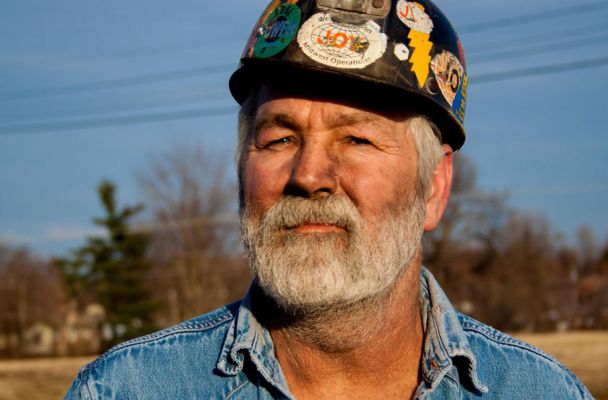Detailed Smithsonian.com Article: “Why Black Lung Disease Is Deadlier Than Ever Before”

Michael “Flip” Wilson (Photo credit: Dave Jamieson, image courtesy of Huffington Post)
A couple days ago, Smithsonian.com published a detailed article about the recent resurgence of black lung.
The well-done article, titled “Why Black Lung Disease Is Deadlier Than Ever Before” tells the story of black lung through the experiences of miners suffering from black lung and the perspectives of professionals who try to help them.
The featured miners (William McCool and Michael Wilson) are clients of Appalachian Citizens’ Law Center (the publisher of this blog).
The entire article is worth reading, but below are a few excerpts.
Black lung ultimately leaves its victims gasping for every breath. “You’d do anything to get some air,” says McCool. Before he got on oxygen, he had what he called “breathing attacks,” which he says feel similar to panic attacks. Once, McCool had an attack so severe that he got out of bed and headed outside, thinking it would be easier to breathe in the fresh night air. But he found no relief. “It didn’t help,” he says.
***
The term “black lung” sounds downright archaic. The name brings to mind a sickness that struck down populations long before modern medicine had taken shape—like typhoid, the plague, or the Black Death. Yet in the last several years, black lung has mysteriously rebounded in central Appalachia, where coal is still king—namely in Kentucky, Virginia and West Virginia.
“Most of us studied these diseases in medical school, but were under the impression that they were relics of a bygone age,” writes Robert Cohen, a pulmonologist at the University of Illinois who specializes in black lung, in an editorial for the British Medical Journal last year. “We believed that modern mining technologies and dust controls, which have been in place for decades, had eliminated this scourge. We were wrong.”
***
“The sad part is it is all preventable,” says [Wes] Addington, who has represented McCool in his ongoing fight for black lung benefits. “This is a disease of the early 20th century not the early 21st century.”
So why is it still happening? And why is it striking miners earlier—and more intensely—than ever before?
***